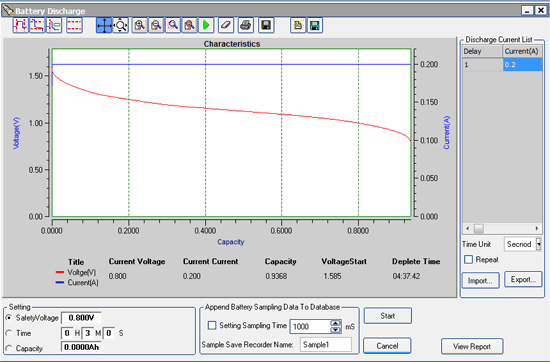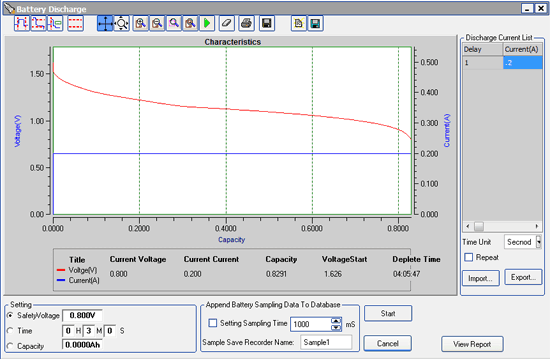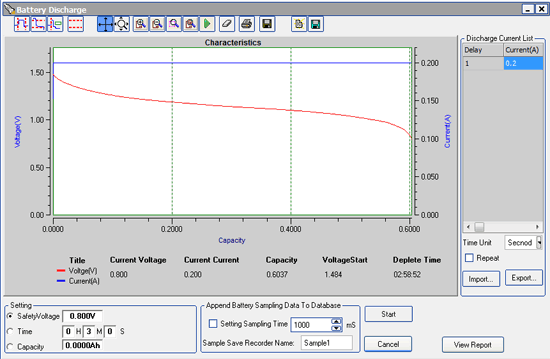Comparing cheap alkaline AAA batteries
UPDATE November 19, 2017: Since this post was made on October 3rd, 2017, I’ve done a number of additional tests on many more batteries. I’ll do a follow-up post eventually, but here are some new key results: first, the performance of a manufacturer’s AAA alkaline batteries is in no way predictive of the performance of a manufacturer’s AA alkaline batteries. As an example of that, Rayovac makes some of the lowest-capacity AAA alkaline batteries but some of the highest-capacity AA alkaline batteries. Second, there can be a surprising amount of variation within a manufacturer. Energizer is particularly poor in that respect, with their AA batteries manufactured in the USA and China significantly outperforming their AA batteries manufacturer in Indonesia and Poland.
For many years, I’ve been a loyal customer of Rayovac alkaline batteries. I thought they were just as good as Duracell and Energizer, they had strong reviews on Amazon, and they were cheap.
However, that worldview came to a shattered end when I read a review on Amazon for some Amazon Basics AAA alkaline batteries. In that review, the reviewer claimed to have measured the actual charge available in various brands of AAA alkalines, and they claimed that the Rayovac AAAs had performed especially poorly. Say it ain’t so! I decided to run my own tests, either to restore the honor of the Rayovac brand or to join the bandwagon throwing tomatoes at it.
For good measure, I decided to also test a couple of other brands of cheap AAA alkalines: the aforementioned Amazon Basics AAA alkaline, and the Harbor Freight AAA alkaline.
To do the testing, I used an Itech IT8511A+ programmable DC load along with some desktop software to control the DC load and record the results. One battery at a time would be placed in a single-AAA holder. The leads from the holder were split, with one pair of branches going to the load terminals on the front of the Itech and the other pair going to the “remote sense” terminals on the back of the Itech. By using separate lines for the load and for voltage sensing, I would avoid problems with voltage drop on the leads due to the current and the non-zero resistance of the wire. This “4-wire” arrangement is also used for measuring precision resistances for the same reason.
Battery capacity is load-dependent, with more capacity for lighter loads, so I used three different constant-current discharge rates for each brand of battery: 50 mA, 200 mA, and 500 mA. Those would simulate light loads like a remote control, medium loads like a toy, and heavy loads like an LED headlamp. I’d run each test with a fresh battery. The stopping voltage would be 800 mV for the 50 mA and 200 mA tests, and 500 mV for the 500 mA tests.
Why those voltages? That’s where the batteries were “dropping off a cliff” — i.e., almost entirely discharged. That’s also around the voltage where modern devices cease to work. Why 500 mV instead of 800 mV for the 500 mA trial? Due to internal resistance, the overall voltage was lower, and I saw that we’d be leaving something on the table if we stopped at 800 mV.
Here are some examples of what the discharge curves looked like in the battery analyzer software for each of the batteries at a 200 mA discharge rate:

Amazon Basics AAA alkaline discharge curve at 200 mA

Harbor Freight AAA alkaline discharge curve at 200 mA

Rayovac AAA alkaline discharge curve at 200 mA
After several days of testing, here are the results.
50 mA
- Amazon Basics AAA alkaline — 1193 mAh
- Harbor Freight AAA alkaline — 1078 mAh
- Rayovac AAA alkaline — 1024 mAh
200 mA
- Amazon Basics AAA alkaline — 937 mAh
- Harbor Freight AAA alkaline — 829 mAh
- Rayovac AAA alkaline — 604 mAh
500 mA
- Amazon Basics AAA alkaline — 575 mAh
- Harbor Freight AAA alkaline — 527 mAh
- Rayovac AAA alkaline — 354 mAh
The Rayovacs were terrible! No wonder my Black Diamond LED headlamp, which pulls about 550 mA on its brightest setting and about 210 mA on its medium-intensity “side light” setting, always seemed to run through its three AAAs so quickly. I mean, look at those numbers: the Rayovacs at 200 mA had about the same capacity as the Amazons at 500 mA. The Rayovacs managed only 60% of the capacity of the Amazons at 500 mA. Ouch.
Admittedly, the problem was less pronounced at the lowest current drain in the test, but the Amazon batteries still had about 15% more capacity than the Rayovacs.
All of the batteries were fresh. The Rayovac batteries and Amazon batteries were obtained from Amazon, and the Harbor Freight batteries were obtained in person from my local Harbor Freight.
Don’t be fooled by the lower starting voltage of the Rayovac batteries in the 200 mA test screenshots above (1.48 V versus about 1.6 V for the other two). I did the test several times to make sure. Notably, they always started up above 1.6 V under no or light loads, so the cells were fresh, and since the same battery holder was used for all of the brands of batteries in all of the tests, it wasn’t an artifact of resistance in the holder.
Roughly 10% behind the Amazon batteries on every test — but way ahead of the Rayovacs — were the Harbor Freight batteries. Note that these are the Harbor Freight alkalines, not the Harbor Freight “heavy duty” batteries that they often give away in promotions. Still, they’re usually on “sale” for about $0.21 per battery, so they’re still pretty cheap. If you can get the Amazon batteries for less than about $0.23 per battery, that might be a better value, but I’ve found they’re usually slightly more than that.
Rayovac: it’s been great, but we need to break up. I’m an Amazon or Harbor Freight battery guy now.
Recent Comments